Types of Employee Self-Service Software
By integrating employee self-service software into your operations, you can transform ad hoc HR activities into a well-oiled process. This transition will help you empower your employees and boost their engagement, directly affecting your sales and profits.
According to the Gallop survey, high employee engagement is directly connected to an increase in sales (18%), customer rating (10%), and profitability (23%).
But before you pick an HR platform or start building an employee portal, you should first figure out which type of employee software fits the needs and scale of your company.
Let’s look into the key characteristics, features and benefits of self-service tools for employees and the major types of employee portals for various goals.
Employee self-service portal (ESS portal) is a web portal that provides employees with easy access to services, data, and collaboration tools in the organization. It unites fragmented experiences, data points, and various applications on one consolidated platform. So employees can get the information and services they need faster.
Adoption of ESS portals leaped as we rapidly transitioned to remote and hybrid work, helping recruiting and HR teams completely rebuild their processes and adapt them to online space. Some of the most common functions of a self-service employee portal include:
- online employee onboarding and management
- accessing employees’ data and company documents, including policies, workplace safety regulations, knowledge base, etc.
- managing and tracking employees’ timesheets, schedules, assignments, etc.
- navigating the company’s applications and systems
- managing administrative duties and HR tasks (benefits, tax, payroll)
- conducting employee training, knowledge transfer, surveys, etc.
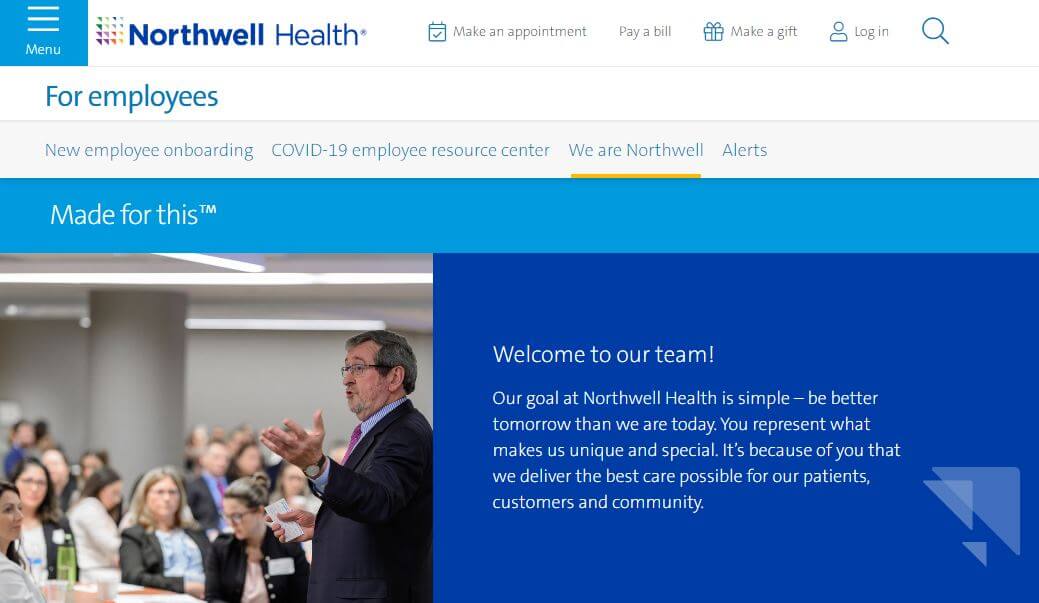
Example: Northwell Health employee portal. Image credit: Northwell Health
Improve employee engagement and increase retention
One of the biggest benefits of employee self-service portal is improved talent engagement and employee experience. Access to the employee portal makes it easier for your staff to manage routine tasks, such as submitting expense reports or vacation requests, and stay up to date with everything that is going on in the company. Especially for those who work in hybrid and remote work environments. As a result, you get happier employees and positive work culture.
Get a 360-degree view of employee experience
ESS portals promote transparency and help you and your HR department get a comprehensive view of the entire employee lifecycle, from onboarding to exit interviews. So you can build data-driven retention strategies, boost productivity and optimize performance management.
Manage business and HR tasks in one place
Use a self-service portal for employees to gather all administrative and HR tasks in one space. It will help you eliminate scattered experiences, endless email threads, and data silos. More importantly, it will give your employees autonomy to manage their benefits, taxes, payroll, working hours, vacations, or any other work-related activities.
Automate processes and reduce costs
Imagine how much time, effort, and money you could save by switching from manual paper-based HR operations to online employee management. A tailored employee self-service platform can help you automate various steps of the employee journey. This includes employee data entry and onboarding, orientation, employee training, knowledge transfer, benefits and payroll management.
Create powerful self-service tools for your team
Save time, cut operating costs and deliver excellent employee experience with a quality employee portal.
WEB PORTAL DEVELOPMENTMeet security and data protection requirements
An employee portal acts as a vault for your employee data, helping you increase digital security and comply with personal data protection regulations. It also promotes data accuracy, as your staff can dynamically update their information in real-time (contact information, office location, etc.).
Employee portal can be a part of a multifunctional HR software or a standalone solution. It can be a backbone of all employee activities in the organization, or focus only on one specific area of human resources tasks (e.g., staff training). Depending on goals, features, and functionality, we can single out several types of employee self-service portals.
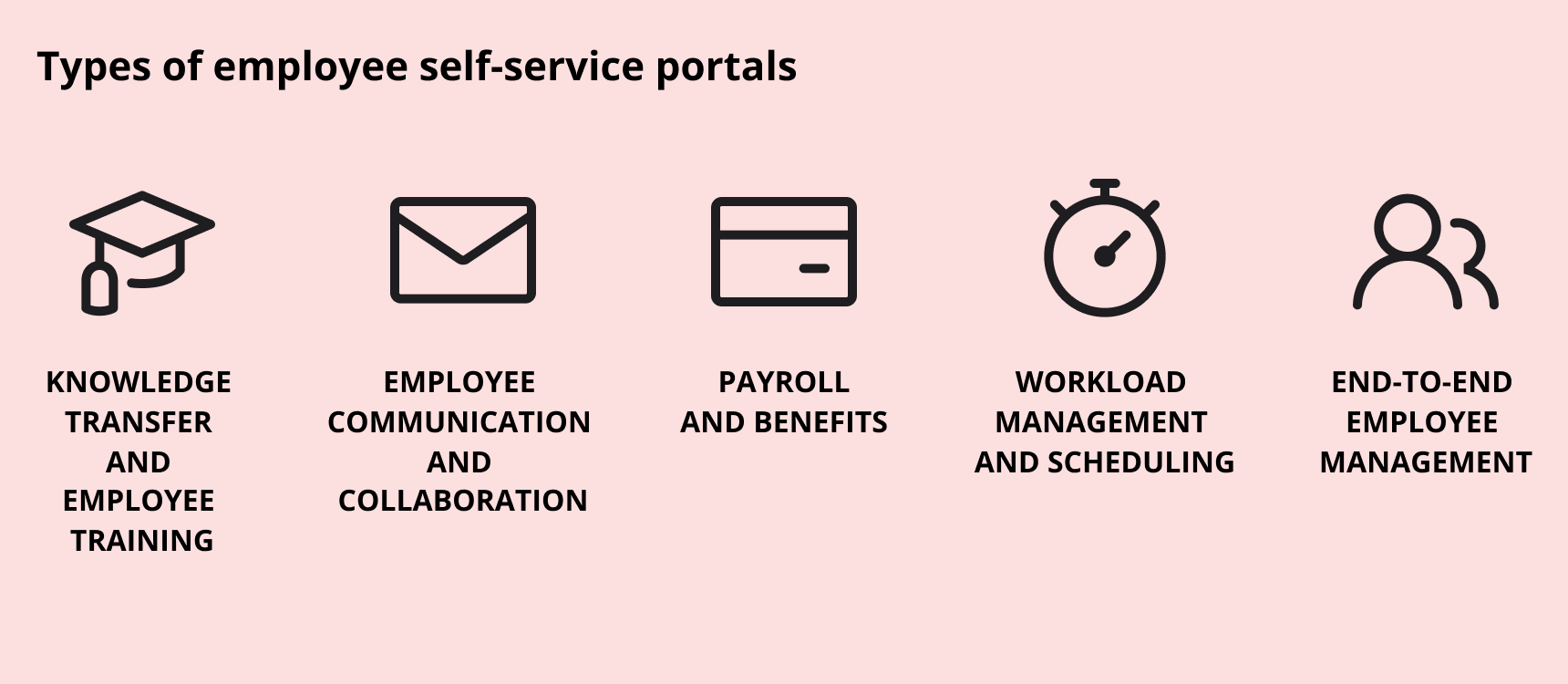
For knowledge transfer and employee training
The primary goal of training portals is to give new hires and current employees easy access to the company’s knowledge base, facilitate knowledge sharing, and conduct corporate training online. It helps employees integrate faster, speed up reskilling and upskilling, and maintain a high level of professionalism in the organization. Not to mention all the weight it lifts off the HR team’s shoulders.
Much like other learning management systems, these portals are built around online courses, directories with training materials, and tools for acquiring new skills. Other valuable features include gamification for active learning and tracking progress, collaboration tools for peer-to-peer training and mentoring, and navigation tools for a corporate knowledge base.
For employee communication and collaboration
Employee portals are widely used for internal communication and company-wide announcements (notifications, newsfeeds, events, etc.), especially in global organizations with offices scattered around the world. Employees benefit from secure communication and navigation for corporate events, staying up-to-date with the recent news and initiatives in the company. In the meantime, HR teams easily coordinate corporate activities online, gather feedback, and address employee requests.
For administrative tasks
One of the most popular types of employee portals is focused on managing administrative tasks — contracts, payrolls, benefits, leaves, insurance, and work-related expenses. Aggregating all features for document management and administrative functions helps HR and accounting teams better control and automate multi-country payroll and financial reporting, reduce complexity and errors, and completely eliminate paperwork.
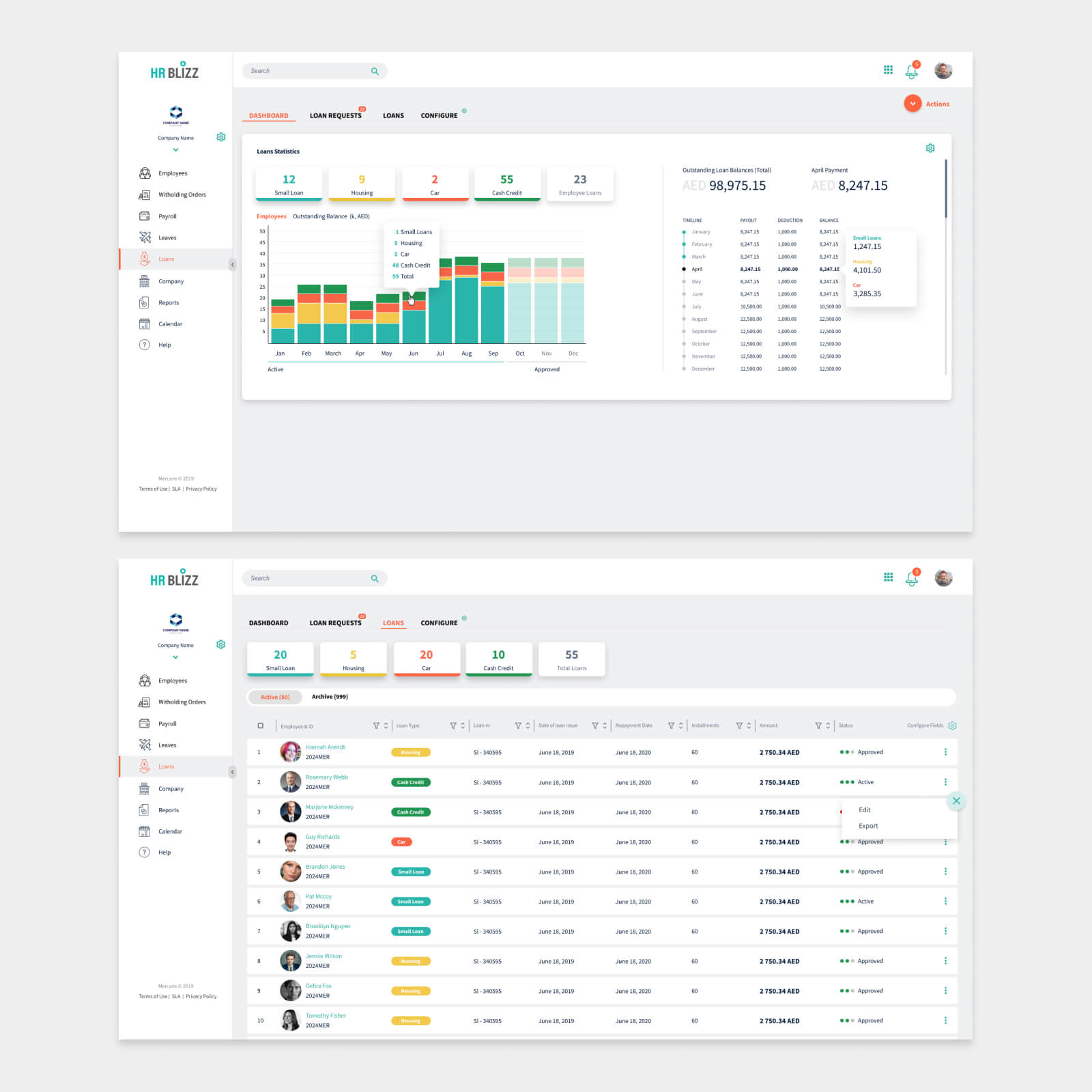
Example: HR Blizz dashboard
For workload management and scheduling
Want to improve and automate workload management? Then consider ESS portals that provide employees and managers with convenient tools to assign jobs, set up schedules, and track working hours, attendance, and overtime. These portals are instrumental in ensuring effective time-tracking and accurate payroll operations.
For end-to-end employee management
This is the most complete type of employee self-service portal, which can include all the previously mentioned features and even more. Often a part of a larger HR management software or ERP, these portals have comprehensive functionality that can be adapted to the specific needs of the organization or industry. Along with self-service features for employees, these portals provide a wide range of resources for HR and managers.
Example: OneWalmart portal for Walmart employees and associates is an excellent example of a web portal with a broad range of functions and services, including:
- Employee schedule and leaves management
- Access to paystubs, rewards, savings and retirement programs
- Workday training and support resources
- Career navigation and performance tracking
- Benefits guide and health insurance management
- Communities and newsfeeds
- Workplace guides and policies
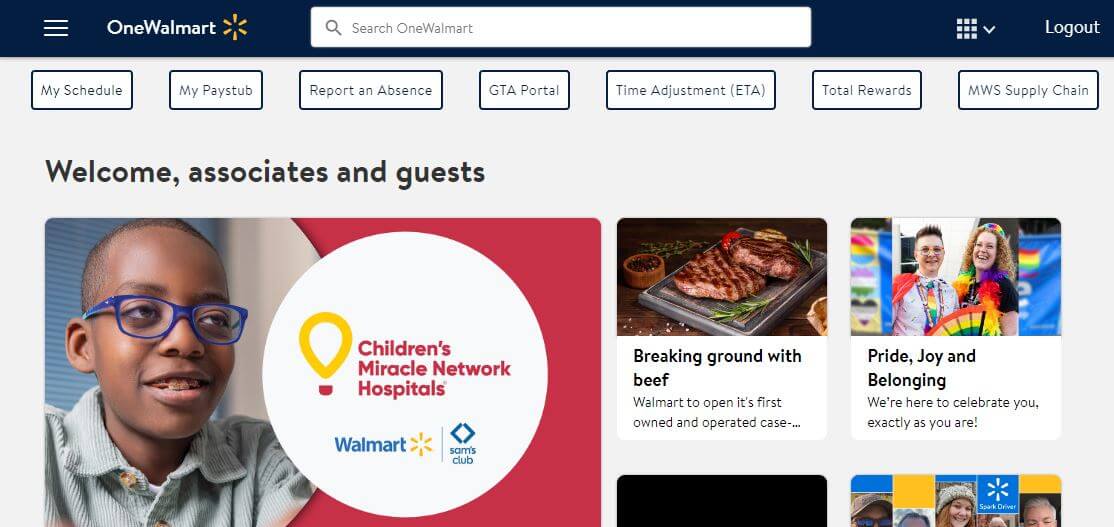
Example: OneWalmart portal. Image credit: Walmart
Now that we have gone through the key types of portals, let’s round up a list of essential employee self-service portal features to consider before building a portal for your team.
Self-onboarding
One of the main features of the employee portal, self-onboarding allows new team members to go through guided onboarding and integration at their own pace and get quick access to all necessary materials and training. Without rigid schedules and overwhelming activities.
Employee data management
Access to a web portal allows employees to add, view, and edit their data anytime, anywhere. This includes personal and professional information, attendance and working day time tracking, reports, and leave requests.
Payroll and benefits
Payroll management is a valuable feature that allows employees to review and track their financial data. This includes salary history, bonuses, compensations, and expense reports. This feature may also include information and enrollment for benefits packages, retirement programs and health insurance plans covered by the company.
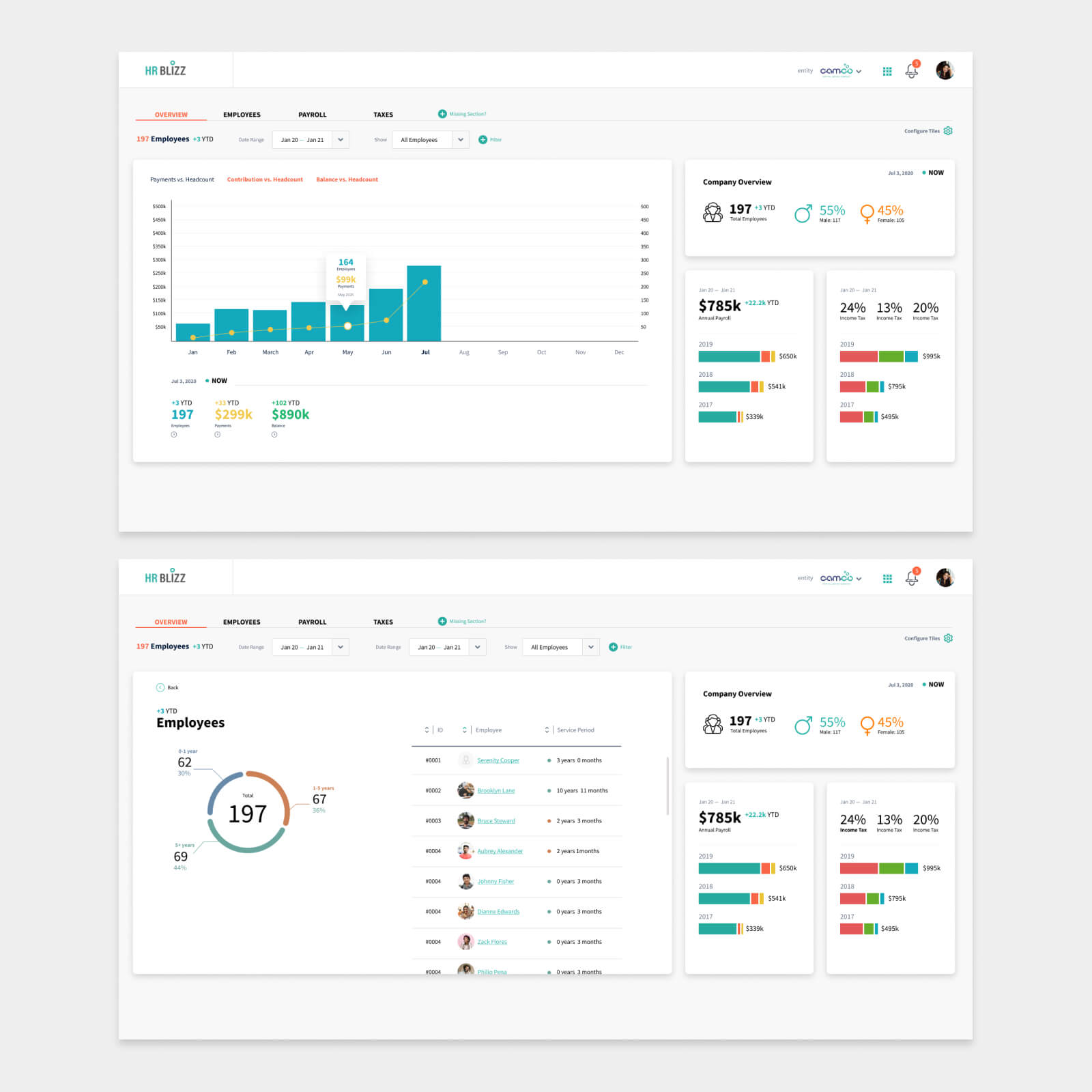
Example: HR Blizz payroll dashboard
Resources and guides
Every self-service software for employees provides access to in-house policies, guides, manuals, training materials, and other resources that help employees coordinate their career journeys in the company.
Career navigation
Job description, career navigation, and performance management tools are valuable features that help employees grow their careers in the company. It’s good for retention, and good for business.
Communication and messaging
Online requests, social features, and company-wide messaging are important features to increase employee engagement and facilitate collaboration across teams and departments. Let alone communication with peers that nurtures team spirit and elevates work culture.
By now, you probably already have a high-level idea of what type of portal and functions you need to level up your HR operations. But there is still one important question to answer before you move on with your project: whether to get an employee portal out-of-the-box and adjust it to the needs of your business or build a custom employee self-service software from the ground up.
Your decision depends on your requirements, resources and long-term goals. Platform-based portals help businesses quickly and cost-effectively solve standard employee management tasks. However, if you are looking for something more personalized and scalable, consider custom web portal development fully tailored to your organizational structure and the needs of your employees.
Here are a few reasons to choose a custom-built portal over a platform solution.
Custom employee portal offers several important advantages. First, it is designed in line with the unique requirements of your target audience and your processes. So you can create user experiences and workflows that mirror your operations instead of adjusting your processes to standard workflows of a ready-made solution.
Secondly, custom development gives you more leverage when it comes to portal scalability and flexibility. You can easily add unique features, rebuild and scale your portal based on your changing needs as your organization evolves. You’re in control of the technology and can integrate it smoothly into your existing infrastructure. This also includes security measures, protocols, and access controls which are essential for compliance and employee data safety.
And finally, despite the higher upfront costs of custom development, this strategy often proves to be more cost-efficient in the long run compared to the platform-based approach. It gives you ownership and therefore frees you from licensing expenses and platform lock-in. Not to mention costly customization to stripping off unnecessary features of an out-of-the-box solution.
Leverage our expertise in web portal development to create a custom self-service portal that will empower your team and level up your employee experience.
Our experience in employee software development includes the design and development of cloud-based HR employee management solutions for a global HR and payroll service provider Mercans. Our team has been working on the design and frontend of two SaaS suites, HR Blizz and Mesaar, helping the client deliver recruiting and job portals, HR and payroll automation services, and employee management applications.
Since the beginning of our collaboration in 2019, Mercans has succeeded in many strides and was named a leader in payroll technology. Read the full success story…
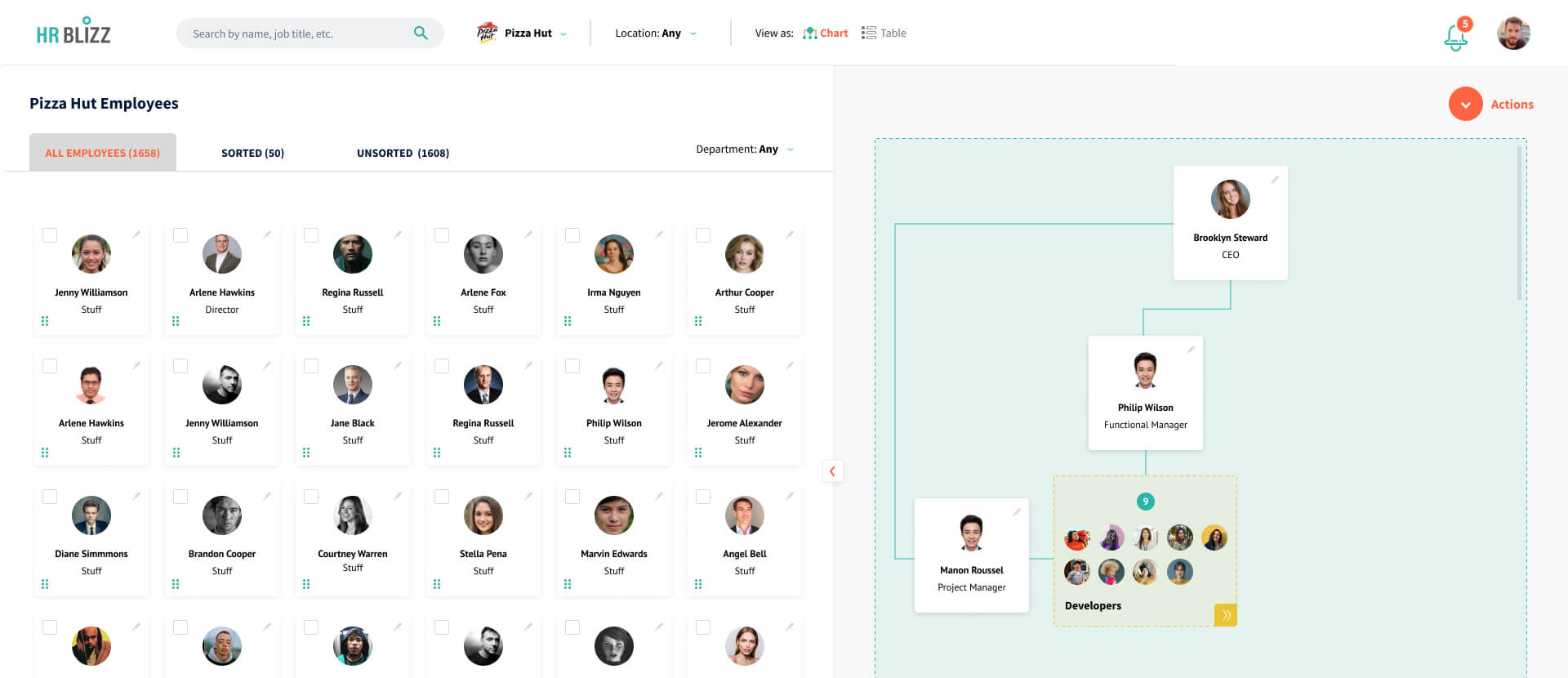
Example: HR Blizz platform
Increase employee engagement and watch your revenue grow
Switch from inconsistent HR activities to effective employee management.
BUILD EMPLOYEE PORTALQuick wrap-up
- Adoption of an employee self-service program allows HR teams to painlessly transition to remote and hybrid work and aggregate services, features and functions in one place.
- Common features across various types of employee self-service software include online onboarding, HR tasks and document management, employee training and integration.
- Employee self-service portals offer abundant benefits helping organizations improve employee engagement and retention, and as a result, boost their profits and growth.
FAQ
- training portals for knowledge transfer and training,
- communication and collaboration portals,
- payroll and benefits portals for managing administrative tasks,
- workload management and scheduling portals for efficient task allocation and time tracking,
- end-to-end human resources management systems.







